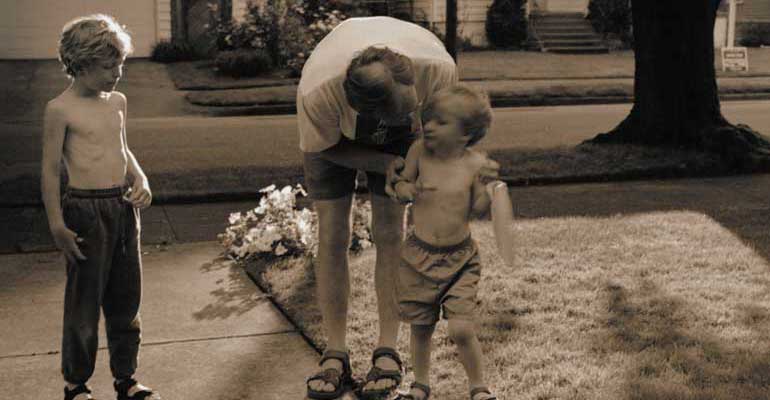The promise of the “Terrific Threes” is what helps us survive the “Terrible Twos.” By the time our children turn three, we have said “no” at least fifteen times a day — roughly 5,475 “no’s” in the course of a year!
We have learned to say “no” in at least a hundred different ways — “No cookies until after dinner,” “No hitting!” and “That’s a no-no, we do not paint the dog!” Training provided us by our toddlers helps us understand our preschoolers’ need for learning what “no” means. Developmentally, our children have changed — but the importance of setting limits and providing structure never changes.
Developmental Needs
Preschoolers are eager to please. They like to do well and want to do things right. They are learning about friendship by practicing turn-taking and playing cooperatively. They are learning right from wrong, which often means testing their ideas against limits you set.
While all children go through these phases, parents of the adopted child often have a harder time laying down the law. Perhaps it’s because we have waited so long for the child we are raising. But by holding back the “no’s,” you aren’t doing your child — or yourself — any favors.
Why Setting Limits Is So Important
Setting limits has three basic functions during this period — safety, containing, and modeling.
Safety is the primary concern. Although your preschooler is working at understanding right from wrong, he may still blur boundaries between reality and fantasy. He can underestimate the danger in certain situations — turning on the stove, for example — and overestimate his ability to handle specific tasks, such as finding his way to the neighborhood park. Preschoolers need to know who is in charge (you) and whom they can depend on to keep them safe (you again).
Containing is best thought of as the “imaginary bucket” that holds your child’s tough, out-of-control, and scary feelings. Saying “no,” setting limits, and holding your child on your lap can be this container. Basically, you provide a structure for your child’s intense feelings and thoughts, until she is mature enough to manage them. Over time the goal is to encourage your preschooler to depend more on internal resources.
Modeling provides a blueprint for using and saying “no.” “Wanna climb to the top of the roof?” asks your child’s best friend. “No,” your son (hopefully) replies. Applaud such “no’s” and your child’s ability to resist peer pressure.
All children need to know that they can get help with difficult or scary thoughts and feelings. The adopted child is no different. Adoptive parents, however, can find limit-setting difficult. They worry about how their child may have been treated in the past or that saying “no” may create problems.
It is important to remember that limits and discipline translate into structure, and all children need structure to organize their thoughts, feelings, and relationships. In other words, providing structure is a great way to love your child and give him skills he needs.


